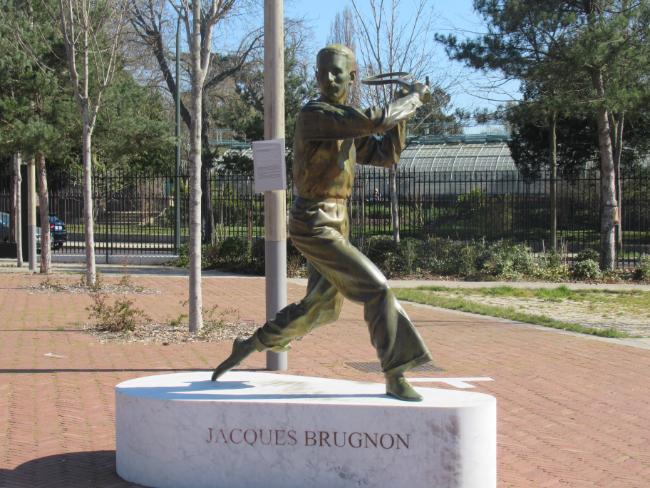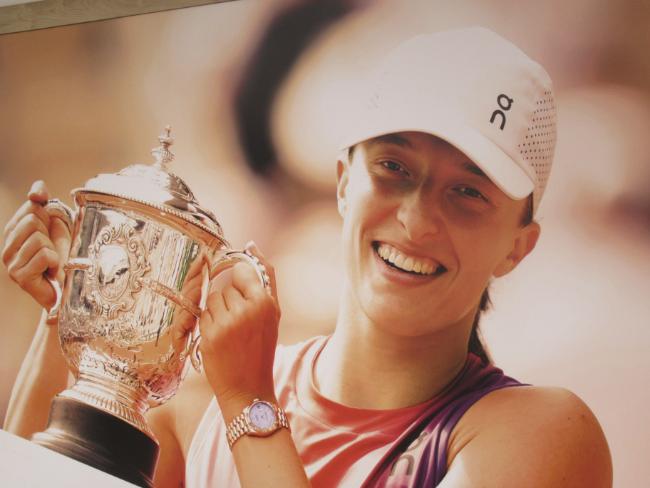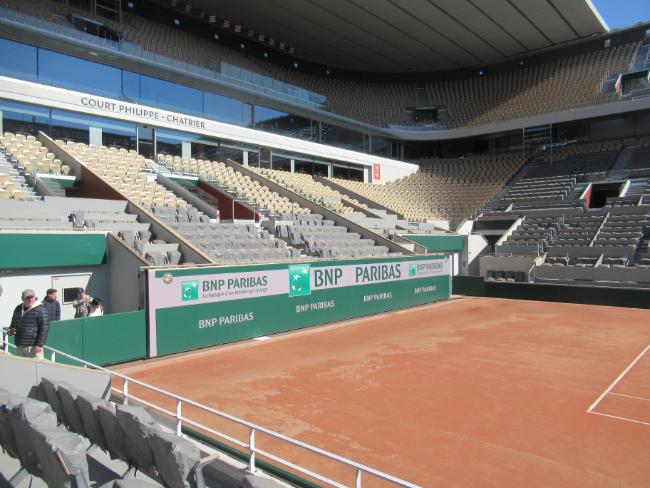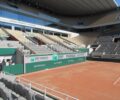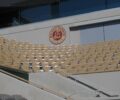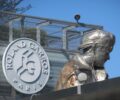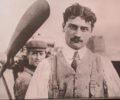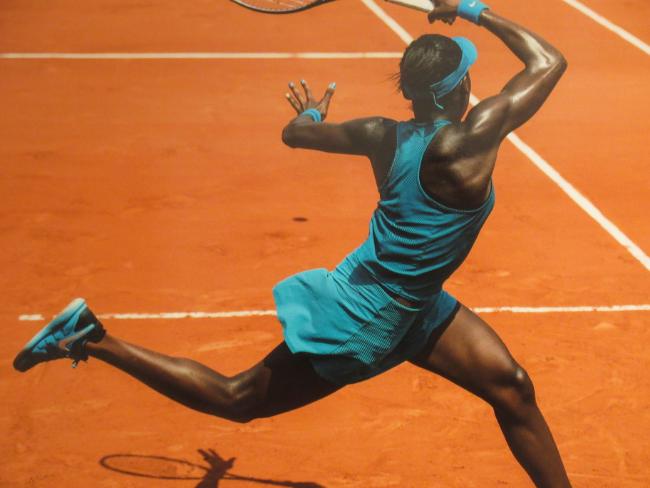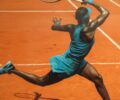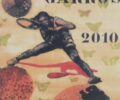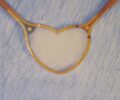Vive Le Tennis! Take a Tour of Stade Roland Garros


- SUBSCRIBE
- ALREADY SUBSCRIBED?
BECOME A BONJOUR PARIS MEMBER
Gain full access to our collection of over 5,000 articles and bring the City of Light into your life. Just 60 USD per year.
Find out why you should become a member here.
Sign in
Fill in your credentials below.
Vive le tennis! For two weeks around the beginning of June each year, tennis is the talk of Paris as the Grand Slam tournament plays out at Roland Garros in the 16th arrondissement. This year, for the first time, there will also be a fan zone on the Place de la Concorde, where up to 5000 spectators can enjoy live matches on giant screens in a festive atmosphere created by a DJ and a Master of Ceremonies. Maybe you won’t be in Paris this summer, or perhaps you don’t have tickets for a match, but did you know that throughout most of the year you can take a guided tour of the Roland Garros stadium on the edge of the Bois de Boulogne? I went along recently to find out more.
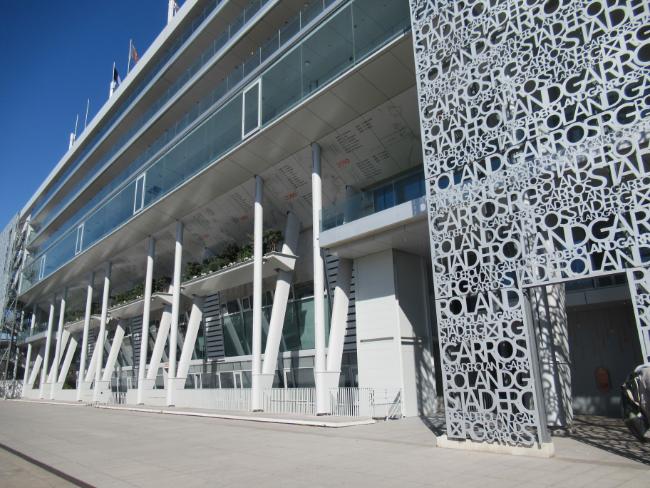
Roland Garros facade. Photo: Marian Jones
“Welcome,” said Lionel, our guide, “to Roland Garros, where fans gather around the famous red clay courts to watch world-class tennis.” We began in the Place des Mousquetaires, a little square named after the “Four Musketeers” of French tennis whose global dominance in the sport in the 1920s and 30s ensured their legendary status. It’s flanked by statues of each: René Lacoste, Jean Borotra, Jacques Brugnon and Henri Cochet. Between them they won 31 Grand Slam titles and it was France’s victory in the Davis Cup in 1927 which led to the building of this stadium. It was decided that a venue worthy of hosting the tournament the following year should be built and this proved an auspicious decision because France won the title in each of the next five years!
As we rounded the main building, the silver lettering of the phrase Stade Roland Garros, written many times over, large and small, glinted in the sun. Along the top were written the names of every winner of both the male and female singles titles, the later ones, familiar names like Nadal, Alcarez and Iga Swiatek at one end, giving way to the greats of the past such as Björn Borg, Billie Jean King and Fred Perry. And in the signage around the stadium, came references to two of France’s greatest ever female players because the second and third courts are named after Suzanne Lenglen and Simonne Mathieu.
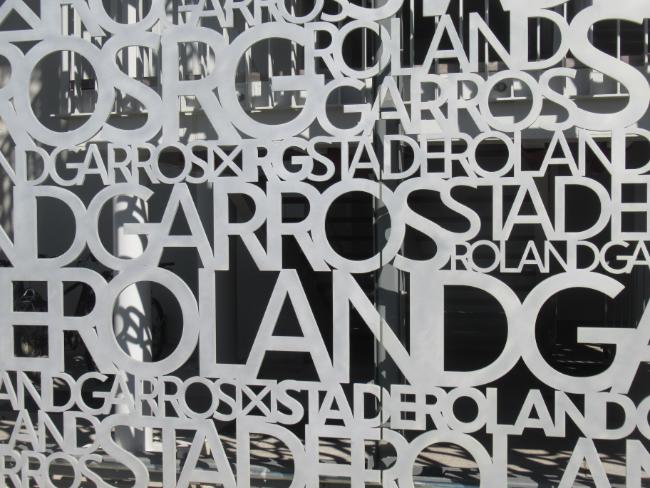
Roland Garros facade. Photo: Marian Jones
Lenglen was truly formidable. Between 1914 and 1926 she won 31 major tournaments, including six French Open titles and six Wimbledon titles. Her athletic play changed the way women’s tennis was seen, her talent made her La Grande Dame of French tennis and an international celebrity. Simonne Mathieu, after whom the third biggest court is named, was the women’s singles champion here in 1938 and 39 and she won total of 13 Grand Slam titles. When World War II broke out, she responded to General de Gaulle’s appeal for resistance against the Germans by joining the Free French Forces. She became the commanding officer of the French Women’s Volunteer Corps, and when de Gaulle marched up the Champs Élysées on Liberation Day in 1944, she was at his side.
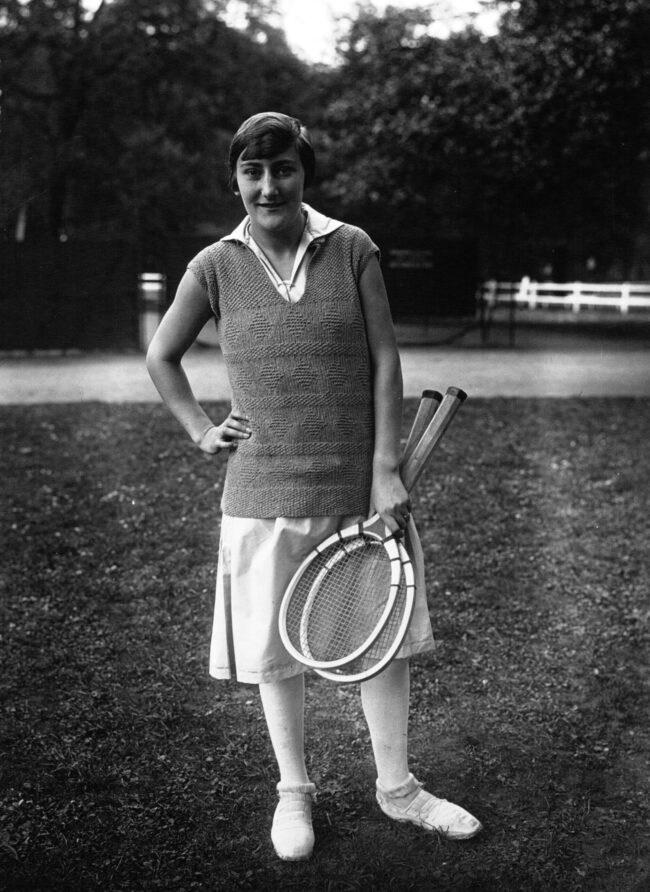
French tennis player Simonne Mathieu at the international championships played at the Racing Club in Paris in 1926. Photo: Agence de presse Meurisse / Public domain
Next, Lionel led us into the Media Center, sited under the main court, to see the desks where up to 300 journalists work and the special room set aside for photographers which has direct access to the courtside. Four clocks on the wall are set to the current time at the four Grand Slam venues where the Australian Open, Roland Garros, Wimbledon and US Open tournaments are played. We went into the two press rooms, a 40–seater and a 100–seater, where journalists gather as players arrive straight after their matches to sit behind a desk on the podium at the front and give their reactions. Screens around the rooms played footage from some of the highest-profile interviews, making it all seem very immediate.

Stadium signage. Photo: Marian Jones
We left through the players’ door and found ourselves in the corridor leading straight to the locker rooms, the men’s on the left and the women’s opposite, each heralded by a huge smiling photo of last year’s winners, Carlos Alcarez and Iga Swiatek, taken here at Roland Garros directly after they’d been presented with their trophies. The men’s locker room – a mirror image of the women’s, which we did not visit – was full of lockers, changing benches and showers, with, more unexpectedly, a roomy sofa area and kitchen facilities at one end. A notice on the wall of the ice–bath room, read “Please don’t leave your towel in the bath,” a reminder that the stars who pass this way are very young, some in fact only teenagers.
From there came my favorite part of the tour, a walk along the route the players take from the locker room to the main court. We passed over cream floor tiles which gradually turned to the dusky red of the court, symbolizing the journey we were making. Quotations lined the walls, including Yannick Noah, the last Frenchman to win the French Open (in 1983) recalling that “There’s no better feeling than winning in front of your friends, home fans and countrymen.” The Polish champion Iga Swiatek’s comment reminds us how competitive the tennis world is: “Beating records after Serena is just about impossible.”
We walk along the mur des champions (Champions’ Wall) where the names of every past singles champion is displayed, then round a corner and up a few steps to the door leading out to the main court where players wait to be announced and then welcomed by the crowd. We’re allowed to step out into this impressive arena, imagining our names being announced to the roar of 15,000 spectators. The familiar red clay surface is surrounded by banked seating in 4 stands named after the four Mousquetaires and, at one end, the tribune présidentielle, a republican version of Wimbledon’s royal box.
Above the long sides is written the quotation, originally attributed to Napoleon, which the pilot Roland Garros is said to have had transcribed onto the propeller of his aircraft. The French version on one side – “La Victoire appartient au plus opiniâtre“ is translated opposite as “Victory belongs to the most tenacious.” Lionel told us about the recent refurbishment of this stadium, including the installation of a retractable roof, making it the pride of France. And no wonder, for no less a player than Venus Williams once said that of all the clay courts she had tried, “Roland Garros plays the best.”
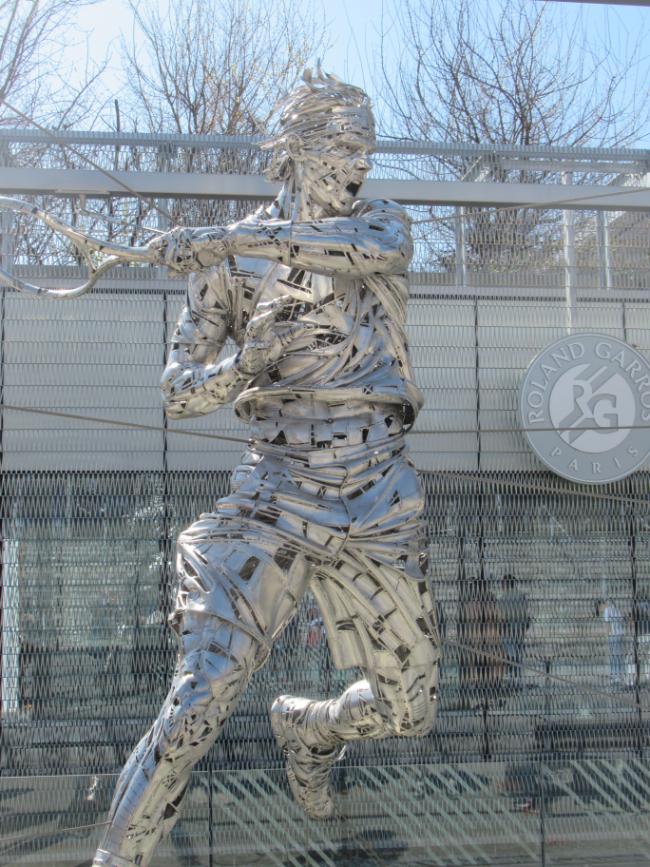
Statue of Rafael Nadal. Photo: Marian Jones
Two statues stood out as we rounded the last side of the site back towards the entrance. A stunning Rafael Nadal in mid-shot marked the retirement in 2024 of the Spanish player who became the darling of the French public, winning 14 dazzling victories here at Roland Garros. Such is his popularity that he was one of the few foreign athletes given a starring role in the 2024 Paris Olympics opening ceremony. And over the entrance, alongside the Roland Garros emblem, is a bust of the World War I pilot Roland Garros, after whom the stadium was named. We ended the tour in the site’s museum, where the opening display told his story.
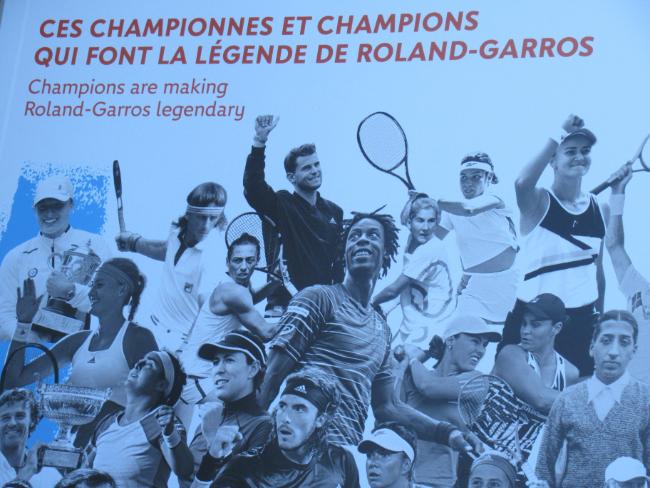
Artwork at the Roland Garros museum. Photo: Marian Jones
It read: “A pioneer in the world of aviation and an avid sportsman, Roland Garros (1888-1918) enlisted as a pilot on the First World War and developed a system for shooting through the plane’s propeller. He was captured, but managed to escape, then went back into battle and died in combat. In 1928, Émile Lesieur, President of the Stade Français, decided to pay tribute to his friend Roland Garros by naming the new stadium at the Porte d’Auteuil after him.”
The museum displays the trophies, including the men’s and women’s singles cups, La Coupe des Mousquetaires and La Coupe Suzanne Lenglen, and describes the highlights of French tennis from the Four Musketeers through to more recent champions like Yannick Noah, Amélie Mauresmo and Marion Bartoli. Exhibits on the history of tennis more generally include a collection of racquets from the wooden ones used for jeu de paume in the 16th century to the sleek graphite versions used today and the latest developments in “intelligent and connected racquets.” Artwork features too, from the striking Roland Garros posters – a different one is designed each year – to stunning action photographs and paintings.
Tours of Roland Garros are available during most months of the year, usually with at least one a day in English. If you’re an avid tennis fan, then it’s quite simply a must and even if you’re not, this is a chance to learn about a quintessential part of the Parisian summer. The guides garner many appreciative reviews on the Roland Garros website – one satisfied customer wrote simply (in French): “Lionel, you are the Federer of guides.” And every summer in future, when you see the little yellow balls flying to and fro across the red courts of the iconic Parison stadium on your TV screen, you will reminisce and perhaps recall the wording from the exhibition which explains that Roland Garros is “more than just a stadium, more than just a tournament, ….. (it is) a saga written by a great many iconic figures over the years.”
DETAILS
Tours of the Roland Garros Stadium
Full price €19. Concessions €14. Under 18s €12
Nearest metro: Porte d’Auteuil
10-15 minute walk from the stadium. Why not take the scenic route through the Jardin des Poètes and the Jardin des Serres? Alternatively, there’s a taxi rank at Porte d’Auteuil.
Details of the Fan Zone at Place de la Concorde
June 4th – 9th 2025
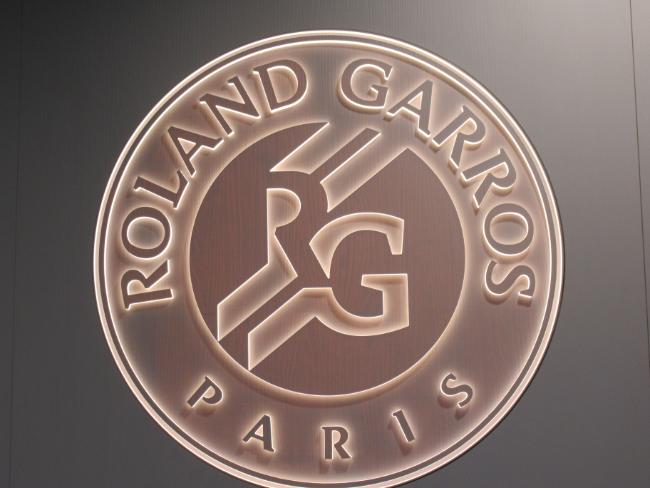
Roland Garros emblem. Photo: Marian Jones
Lead photo credit : Gaël Monfils at Roland-Garros in 2011. Photo: Yann Caradec/ Flickr
More in French Open, roland garros
